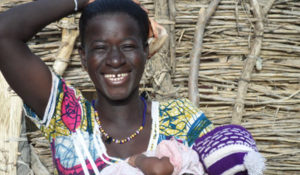Pop quiz: What images come to mind when you hear the words “international family planning?” We asked that question of more than 200 Americans, and the results might surprise you.
When we talked to international NGOs and our partners at the UN Foundation about what kinds of images were most effective in evoking the many benefits of family planning, we got a lot of conflicting answers. Yet we know that imagery is one of the most powerful tools we have to get people excited about important programs like international family planning. So we decided to ask the question more broadly: among American audiences, which types of images are most effective in building support for international family planning programs?
The resulting report, “Images that work,” gets to the heart of one of our favorite topics—visual storytelling. Using an interactive online image testing platform, we invited respondents to give us their observations about a variety of photos. Respondents explained in their own words what they thought of the images. We’ve reported before on the necessity of tapping into viewers’ emotions and this report provides new insight on this topic.
 Americans are responsive to smiles, but not just because smiles look nice—in this research we saw that people imagine reasons for those smiles, effectively crafting their own narrative about the people pictured.
Americans are responsive to smiles, but not just because smiles look nice—in this research we saw that people imagine reasons for those smiles, effectively crafting their own narrative about the people pictured.
Respondents also preferred images that showed tangible examples of women holding contraceptives, or girls with their schoolbooks. These tangible objects help tell a more striking, memorable story.
There’s much more in the survey, including the photos that best align with Narrative Project themes – which have been shown to be effective frames for building support for international development programs.
Read the whole report here!

